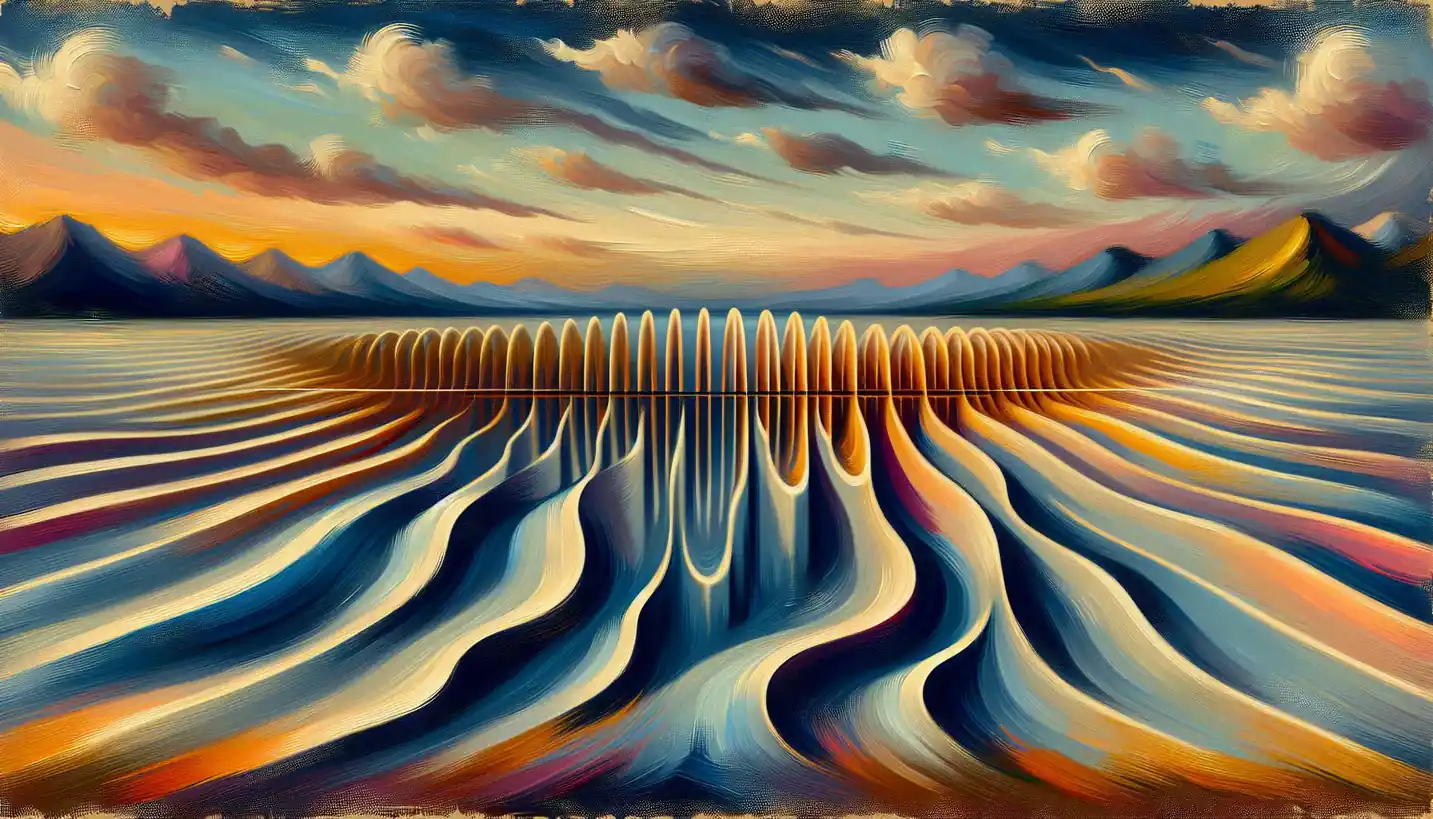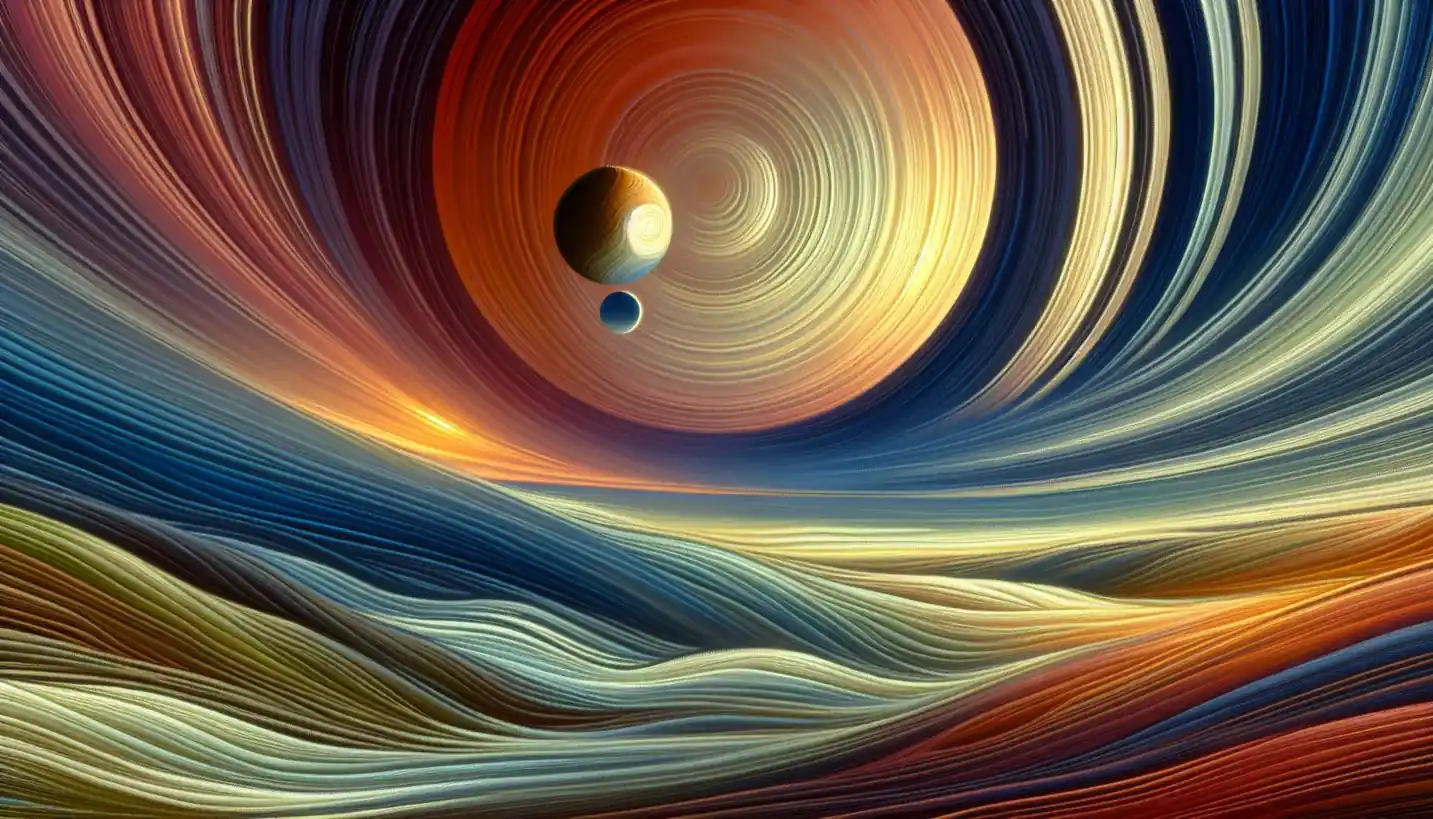· Physics · 5 min read
Understanding Wave-Particle Duality: The Strange World of Quantum Mechanics
Wave-particle duality reveals how particles can be waves and vice versa. Dive into the strange and beautiful world of quantum mechanics to uncover these dual identities.

It’s a mystery that has puzzled scientists for over a century: how can light and tiny particles like electrons behave as both waves and particles? Welcome to the mind-bending world of wave-particle duality, a fundamental concept in quantum mechanics.
What is Wave-Particle Duality?
Imagine watching a magician transform a handkerchief into a dove. One moment it’s soft fabric fluttering through the air, the next, a living, breathing bird. In the quantum realm, particles of light, called photons, and even electrons pull off a similar trick. Sometimes they act like rippling waves, and other times they behave like tiny, solid particles. This dual nature is what we call wave-particle duality.
The Double-Slit Experiment and Quantum Quirkiness
To understand this strange phenomenon, we need to take a trip back to the early 19th century with English scientist Thomas Young and his famous double-slit experiment. Young shone light through two narrow openings and onto a screen, expecting to see two bright spots of light. But surprise! What he observed was an interference pattern, a series of light and dark bands. This was the hallmark of waves interfering with each other, like ripples on a pond.
But the plot thickened when physicists tried this experiment with particles like electrons. When not observed, electrons formed interference patterns, behaving like waves. Yet, once someone started watching them closely, they acted like particles, creating just two spots. It’s as if these tiny entities know when they’re being observed and choose their behavior accordingly.
Why Does This Matter?
At this point, you might wonder why any of this matters. Well, wave-particle duality is crucial because it underpins many of the technologies we use today. Ever used a computer? The microchips inside rely on our understanding of electron behavior to function. Plus, this concept is a gateway to understanding more complex quantum phenomena, such as quantum entanglement and superposition, which are paving the way for quantum computing and other exciting advancements.
The Role of Photons and Electrons
Let’s dive a little deeper into the components that exhibit this dual nature: photons and electrons. Photons are particles of light, the very essence of electromagnetic radiation. When you dim the lights in your room, photons are the particles making their journey from the bulb to your eyes, behaving both as waves and particles throughout.
Electrons, on the other hand, are subatomic particles that swirl around the nucleus of atoms. They play a crucial role in chemistry and electricity, and just like photons, they display wave-particle duality, influencing how we understand the atom itself.
The Mystery of Observation
So, why does observation affect these tiny particles? This is one of the most fascinating puzzles in quantum mechanics. Essentially, the act of measuring or observing forces a particle to ‘choose’ one state or the other, wave or particle. It’s as though the universe itself doesn’t pin down a definite reality until someone is watching. This strange aspect of quantum mechanics has profound implications for our understanding of reality.
Famous Thinkers and Their Contributions
Wave-particle duality captured the imaginations of some of the brightest minds in history. Albert Einstein, for instance, used this concept to explain the photoelectric effect, earning him a Nobel Prize. He demonstrated that light hitting a metal surface emits electrons as particles, reinforcing the idea of light’s dual nature.
Niels Bohr, a pioneer of quantum theory, also contributed by integrating wave-particle duality into his model of the atom. He envisioned electrons as existing in specific orbits, using wave-like behavior to explain the spectral lines of hydrogen.
Quantum Mechanics in Everyday Life
While wave-particle duality can seem abstract, it influences our everyday lives more than we might realize. The very screen you’re reading this on uses quantum mechanics principles in its display technology. Lasers, found in everything from barcode scanners to medical equipment, also rely on understanding of particle-wave behavior.
Think about solar panels, too. They harness photons’ energy to produce electricity, an application rooted in the dual nature of light. Without this fundamental understanding, many modern conveniences would be unimaginable.
The Future of Quantum Technology
Wave-particle duality and quantum mechanics aren’t just topics for textbooks; they are driving technological innovation. Quantum computing, for example, uses principles like superposition (related to wave-particle duality) to process information in ways classical computers can’t. These cutting-edge machines hold potential for breakthroughs in cryptography, medicine, and artificial intelligence.
Moreover, quantum mechanics is setting the stage for quantum communication, promising ultra-secure data transmission. The concept exploits the peculiar properties of quantum systems to prevent eavesdropping, using particles that are linked, or entangled, across distances.
Continuing the Exploration
Wave-particle duality is a starting point for anyone intrigued by the quantum world. As researchers continue to unravel the mysteries of the subatomic realm, who knows what fascinating discoveries and innovations lie ahead? This concept not only challenges our understanding of reality but opens the door to technologies that could transform our future.
If you’ve ever gazed at a beam of light, mesmerized by its beauty, remember that within that glow lies a quantum dance, a dance that hasn’t yet chosen whether it walks like a particle or waves like a ripple in space.
The world of quantum mechanics is indeed strange but endlessly fascinating. So next time you flick on a light or send an email, take a moment to appreciate the dual nature of the world around us—it might just be more magical than any stage trick you’ve seen before!



